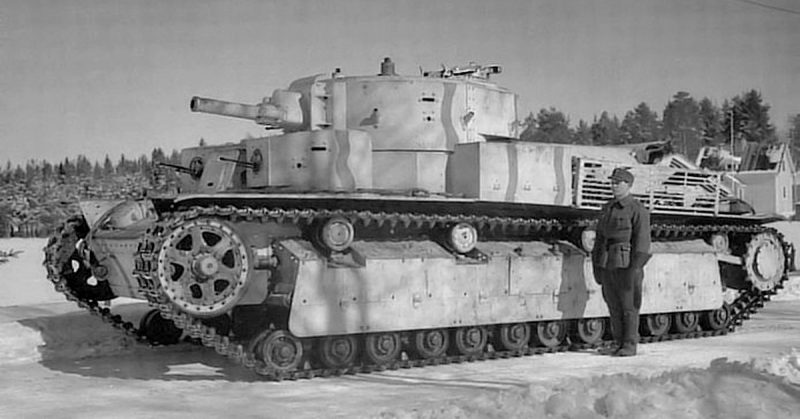In May 1945, American troops captured Rudolf Hale, a German major in the Second World War. During the interrogation, he told that in 1941 he took part in military operations on the Eastern Front. At the same time, he and his company participated in the capture of the city of Minsk.
After the capture of the city, his company was brutally attacked, as a result of which they suffered serious losses. The reason for this was a sole Soviet T-28 tank, which suddenly appeared on the streets of the city…
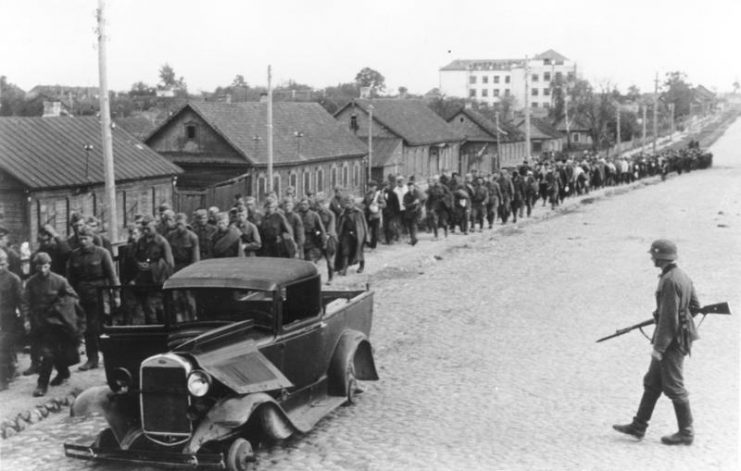
The T-28 belongs to the middle class of tanks and has three towers. It was widely used by the Red Army in the war with Finland and the Polish campaign. The number of T-28s produced was about 500 units. At the beginning of the Great Patriotic War (Soviet Reference to WWII), a large number of T-28s were in poor condition. Repair of one of these tanks was done by the future hero, Dmitry Malko.
On the morning of June 27, 1941, Major Denisovsky, the chief of the warehouse of the Western Special Military District (in the occupied Minsk region), issued an order for general evacuation. According to his order, all the military personnel must collect all their things and equipment within 24 hours.
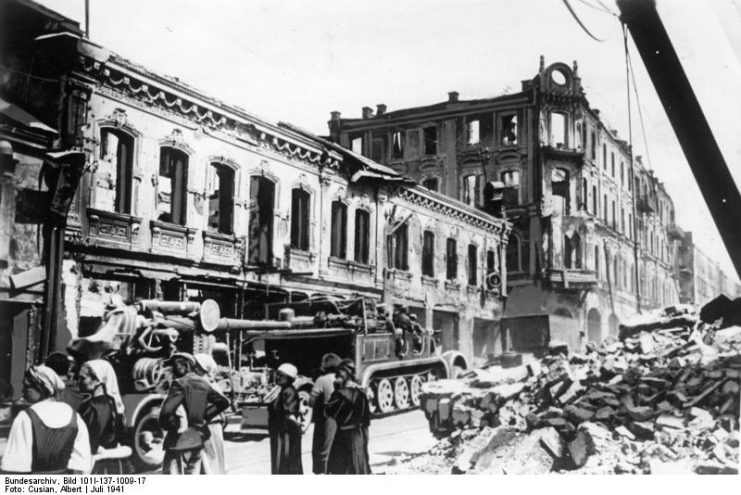
Senior Sergeant Dmitry Malko persuaded his boss to withdraw from storage one stored tank T-28. According to archival data, 63 T-28 tanks were stored in the warehouse. Throughout the night, Malko, with the help of his wife, prepared a tank for the long journey ahead.
On the morning of the next day (June 28), the column of men and equipment left the place of deployment and advanced along the Mogilev highway. The last in the column was the tank of Dmitry Malko.
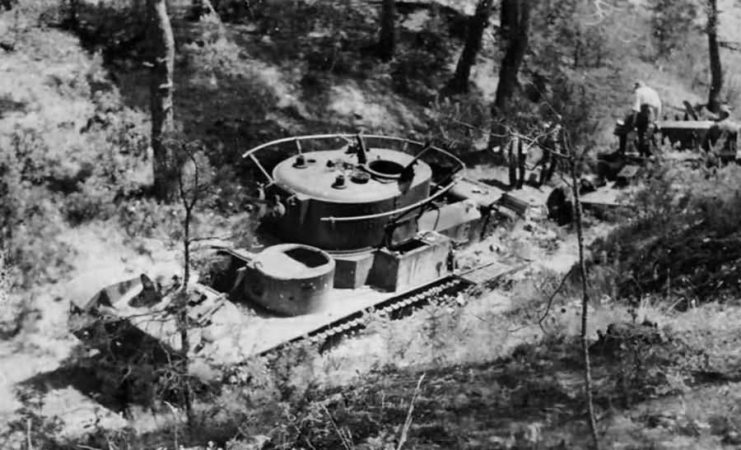
During the movement, the column came under aerial bombardment. As a result of the bombing, the Malko tank was damaged and turned into “dead weight“. Major Denisovsky ordered the non-working tank to be destroyed and the crew to continue the retreat. However, Malko refused to do this and decided to repair his tank alone.
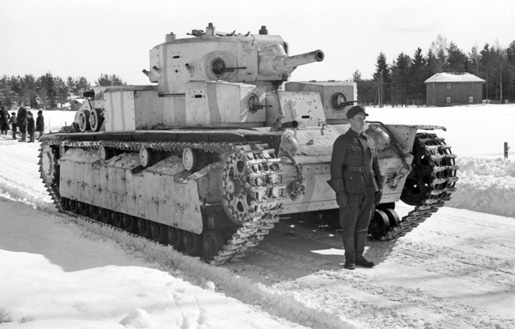
For several hours, Malko worked on his tank. When the engine of the tank again fired into life, the sergeant was completely alone. The attempt to catch up with his column did not yield results. Having reached the Berezina River, Malko met one of the military units.
There, by coincidence, the tanker Major Vasechkin and three cadets of the artillery school, Nikolai Pedan, Alexander Rachitsky, and Fedor Naumov, joined the tank. The composition of the fighting vehicle was now fully manned.
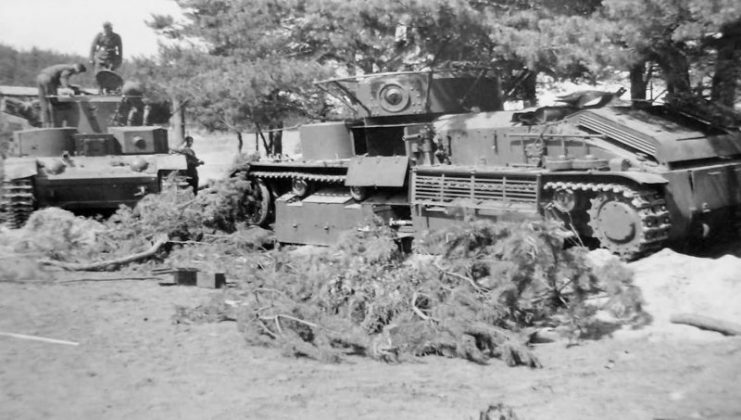
The commander of this unit set the crew an urgent task: to pull out from the forest marsh three stuck T-26 tanks. But the tanks could not be found. Malko and the crew were forced to stay the night in the forest. In the morning, it turned out that the Soviet troops had had to leave their positions; the T-28 and the whole crew found themselves surrounded by enemy troops.
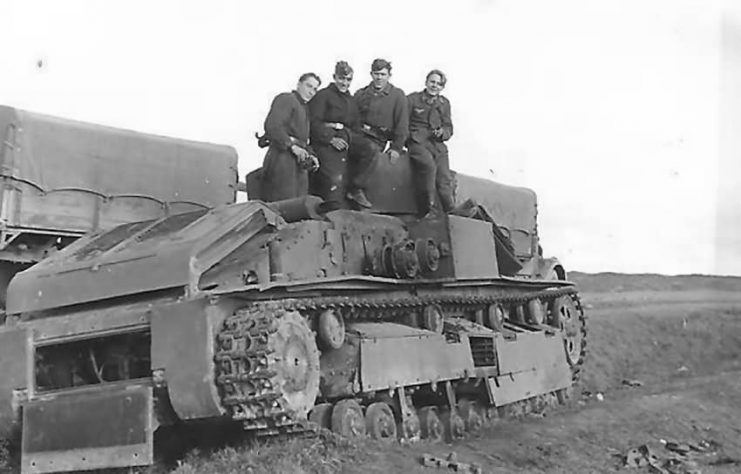
The German offensive was in the active phase. Any chance of retreat was via the Mogilev highway but this turned out to be completely cut off by the German troops. The crew of the tank pondered a plan to break out from the German encirclement.
Cadet Nikolai Pedan proposed an innovative plan. He proposed that they break through and into occupied Minsk. Sergeant Malko supported this idea – he knew the city well and was confident that he could easily pass through it.
The T-28 had several advantages in such a difficult maneuver. It had excellent weapons: a short-barreled 76mm gun, two machine guns in the side turrets, one machine gun at the rear, and a Degtyarev machine gun in the central turret. Another obvious advantage of the tank was speed.
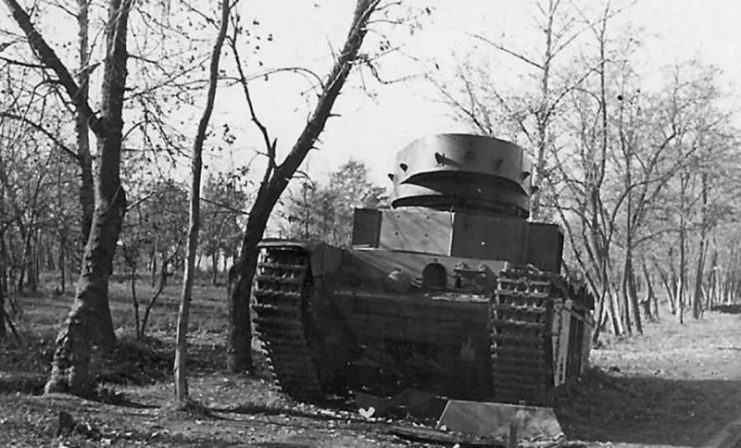
On the way to Minsk, it was necessary to replenish their ammunition. The decision was quickly made to visit an abandoned warehouse located in the vicinity of Minsk. They managed to get to the warehouse without incident. There, the crew of the tank completely replenished the fuel tanks, loaded shells, and cartridges. A couple of dozen shells were not suitable for their 76 mm L-10 guns, but the calibers coincided.
In the morning, after an excellent breakfast, the tank headed into the occupied city of Minsk. It was hot weather, which created an additional problem. Having little experience working together, before the start of the operation, the crew determined the signals by which the commands would be given.
“The major’s hand lies on the right shoulder of the driver’s mechanic – the tank performs a right turn, left-to the left, one push in the back – the first gear, two – the second, the hand on the head – the stop.”
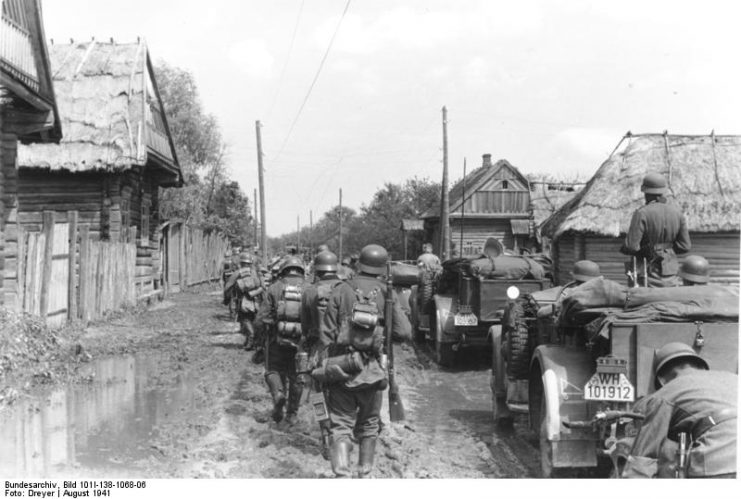
They did not plan to talk for various reasons. Each of the soldiers took a firing position in the turret of the tank. The crew knew that they would not give up without a fight and were determined to inflict as much damage on the enemy as possible.
The highway leading into the city was empty. Before entering the city, there were a couple of armed cordons, but they missed the tank. As a result, the T-28 became a “Trojan horse,” which the Germans perceived as trophy equipment. (In Minsk, there were many trophy Soviet tanks).
The first victim was a German bicyclist who cheerfully pedaled in front of the tank. His figure in the observation slot greatly angered the driver. The tank added speed and rolled the bicyclist along the asphalt.
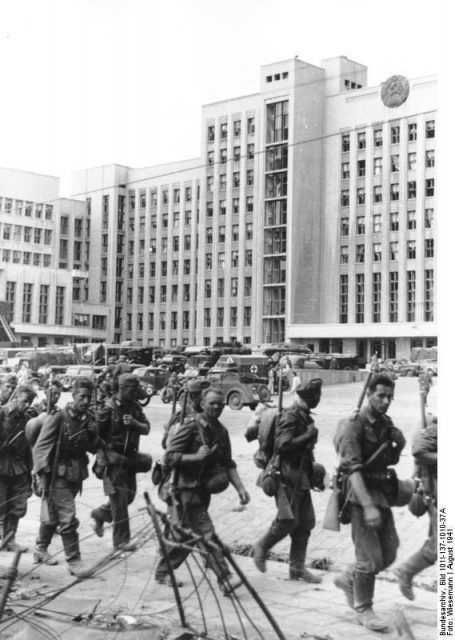
Then the T-28 tank drove into Voroshilov Street. On this street, destroyed by bombing, there had been many businesses. Ahead of a distillery, the crew saw the first Germans. They were loading boxes of alcohol and did not pay attention to the moving tank.
Approaching closer (about 50 yards) a machine gun located on the right turret rained a hail of bullets on the Germans. Fascists fell one after another. Some tried to hide in the courtyard, but they failed. In a minute, they were all dead. The tank drove into the truck and crushed it along with the remaining soldiers.
Continuing deeper into the city, the T-28 crew met a column of military motorcyclists. Here is an excerpt from this meeting from the memoirs of Sergeant Malko:
“.. suddenly a column of motorcycles jumped out from behind the corner of Lenin’s street. The Fascists moved like in a parade – in straight rows, at those who are driving, their elbows are widely apart, their faces are impudent.
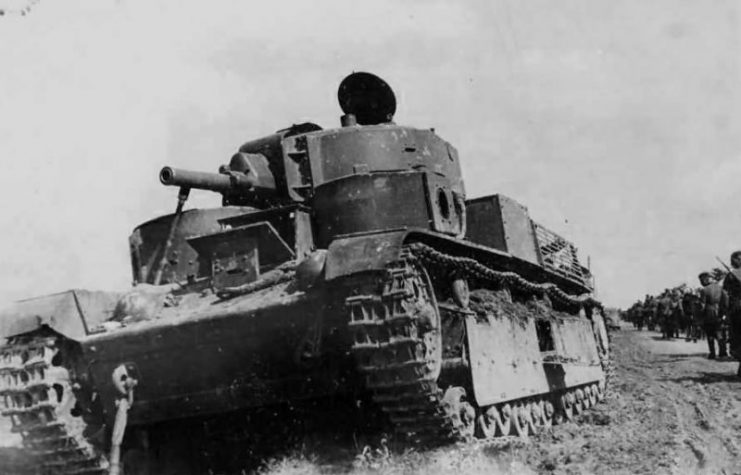
The major did not immediately give the command to open fire. But when I felt his hand on my left shoulder – I threw the tank to the left. The first ranks of motorcyclists crashed into the frontal armor of the tank, and the car crushed them. Those who followed them turned to the right, and immediately I received a new signal from the major and turned the tank right.
These motorcyclists suffered the same fate. I saw the faces of the Hitlerites, distorted with horror, in the viewing hole. Only for a moment did they appear before my gaze and immediately disappeared under the hull of the tank. Those of the motorcyclists who walked in the middle and tail of the column tried to turn around, but they were overtaken by machine-gun turns from the tank.
In a few minutes, the column was completely destroyed.”
On the tank drove, maneuvering and moving confidently along the streets of the city. Turning left into the street named after Yanka Kupala, the crew found a large amount of German military equipment – military vehicles, ammunition, and weapons. On the riverbank, German soldiers were bathing and field kitchens were located. On the other side of the river at the same time behind the trees were German tanks.
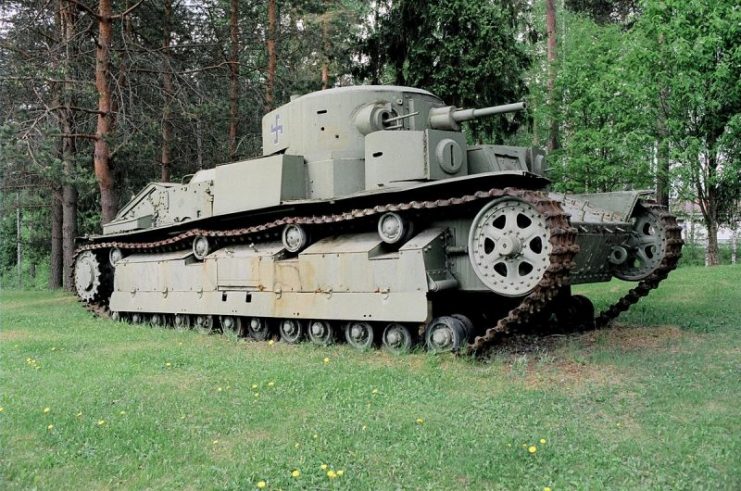
“… T-28 opened fire on the enemy from all its guns. The major clung to the gun’s sight, fired at the Germans from the cannon, and the cadets shot the enemy from the machine guns. I was showered with hot shells; they slid down my back and burned my body.
I saw in the observation slot, how the enemy cars broke out, how tanker trucks exploded and slashed streams of gasoline slipped from the slope into the river. The flame enveloped not only the column of cars but also the neighboring houses, spread over Svisloch to the park trees…
… Machine-gun mowed the Nazis, not giving them the opportunity to come to their senses, while they sowed panic. Almost the entire enemy column, damming Proletarian Street, was swept aside as if a tornado had passed through it.”
Without wasting time, Major Vasechkin gave the command to deploy the tank back and move towards the bridge. Once across the bridge the T-28 came to Minsk’s Gorky Park. Among the dense trees, there were about 20 military vehicles, several self-propelled guns, and tanks.
Near them stood German soldiers who looked up. They were terrified to see the Soviet unit. From the next street, there were explosions of ammunition and equipment. Most probably, the German soldiers took these sounds as an attack from the air. But they were very wrong.
“… the cannon of our tank spoke first, and after it, the machine guns of the central and right turrets struck. And again, as before, ammunition began to burst, a petrol tanker broke out, and a thick black smoke enveloped the avenues of the old park …”
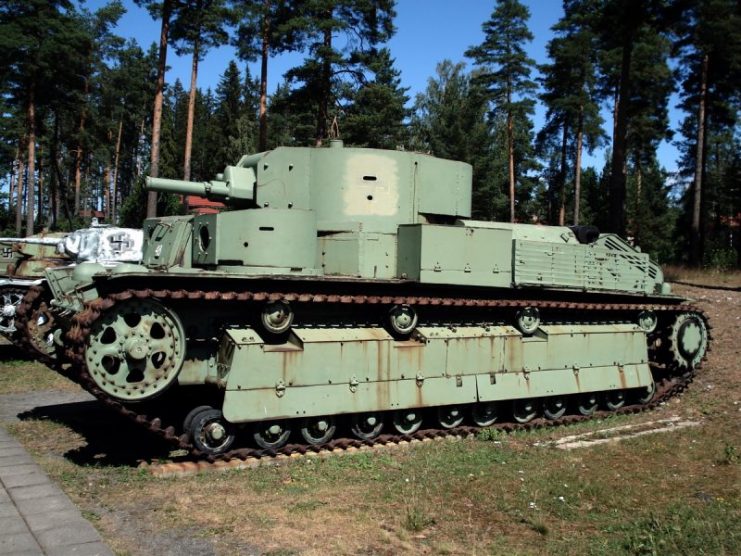
With only 6 shells remaining, the major ordered to stop shooting and begin to move at full speed to the east. Malko put the tank into fourth gear and the T-28 tank drove through the streets of Minsk at maximum speed. The tank moved unhindered towards Moscow Highway.
Suddenly, a bright flash of light appeared in the driver’s observation slot. It was the fire of a German anti-tank gun. After a few seconds, a second shot rang out – the shell hit the tower but bounced. The tank was moving at maximum speed while Malko tried to maneuver. It was necessary to pass the cemetery, and then the tank would be surrounded by residential houses.
At one unexpected moment, the tank received a very strong blow. Inside came thick smoke. Malko realized: “the projectile hit the engine room and caused a fire.” The burning tank continued to move forward until the next hit completely destroyed it. Malko and the Major jumped out of the tank.
“… I saw the major who crawled from the tank and shot the Germans with his pistol. Two cadets got out of the tower, but one was immediately killed, and the other, Nikolai, crawled to the fence…
… The blood continued to flow down my face; I wiped it with a handkerchief and clamped the wound. The last thing I remember is a strong explosion to the side where our tank was left, – the last shells exploded …”
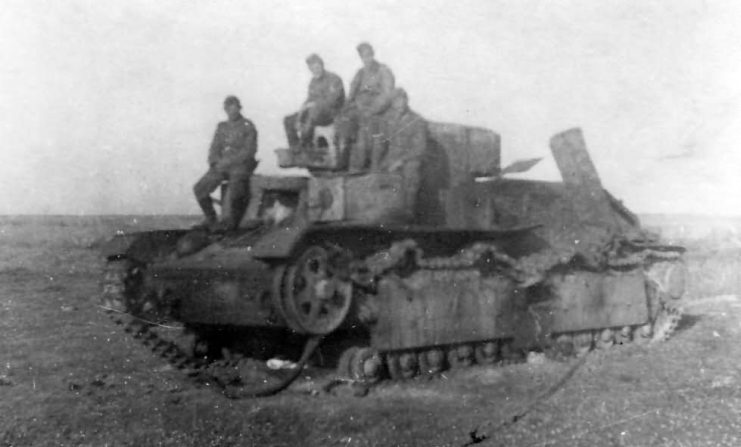
The burning T-28 remained standing in the same place until its ammunition exploded. Dmitry Malko hid for a while, and then he managed to escape from Minsk. Returning to the ranks of his original unit, he was summoned for questioning by NKVD officers. They did not believe his story and ordered that he be shot. Luckily, this order was rescinded.
One cadet had been killed as well as the major. Tankman Naumov took shelter in the city of Minsk. Later he went to fight in a partisan detachment. Nikolai Pedan was taken into German captivity and spent four years in a concentration camp. In 1945, he was released.
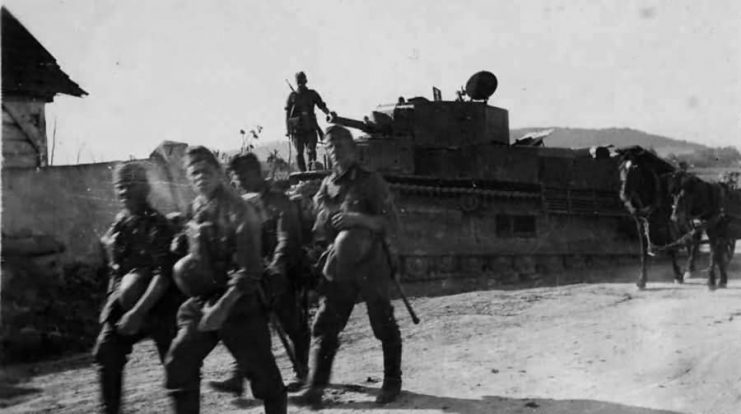
The battered T-28 tank remained in the same place throughout the occupation. In 1944, Dmitry Malko entered the liberated city of Minsk on a T-34 tank. He traveled along the same path through which, in 1941, he had tried to break free.
There he also saw his T-28 tank. It was only after 25 years that the feat of Malko and the crew of that T-28 was officially recognized as a heroic deed. He wrote about all this in his book “On the Earth, in Heaven and on the Sea“.
